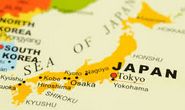Government/Policy

February 7, 2022
Commerce, USTR Announce Deal to Ease Section 232 on Japan
Written by Michael Cowden
The U.S. has announced that a deal has been reached with Japan to ease Section 232 national security tariffs on steel imports from the key U.S. ally.
The U.S. Commerce Department and the Office of the U.S. Trade Representative announced the deal at around 5 pm Eastern Time on Monday, Feb. 7, as SMU had reported they would.
![]() We reported that a deal was imminent. And the main features of the deal – a tariff rate quota (TRQ) replacing the former blanket 25% tariffs – are as we reported they would be on earlier on Monday.
We reported that a deal was imminent. And the main features of the deal – a tariff rate quota (TRQ) replacing the former blanket 25% tariffs – are as we reported they would be on earlier on Monday.
The deal will go into effect on April 1, 2022. It will allow 1.25 million metric tonnes of steel a year to enter the U.S. from Japan free of 25% Section 232 tariffs, according to details released by Commerce and USTR on Monday.
That annual quota amount will be divvied up on a quarterly basis and among the same 54 product categories spelled out in a similar agreement with the European Union.
The deal also requires that steel be “melted and poured” in Japan to be free of Section 232 tariffs. Importers will be required to document compliance with that requirement, and failures to comply could result in penalties, the government said.
The U.S. and Japan said in a joint statement that the agreement was aimed at addressing “non-market excess capacity” and that they would also work together to reduce the carbon intensity of steelmaking.
The joint statement did not call out any nation by name. But U.S. officials in a separate statement singled out China.
“This agreement, combined with last year’s resolution with the European Union, will help us combat China’s anticompetitive, nonmarket trade actions in the steel sector, while helping us reach President Biden’s ambitious global climate agenda,” Ambassador Katherine Tai said.
The pact is also aimed at smoothing over relations with allies damaged by the broad-brush application of tariffs to allies and non-allies alike under the Trump administration.
It is in addition aimed squarely at lowering prices and making domestic manufacturers more competitive in the process.
“I’m pleased to announce the deal we reached will strengthen America’s steel industry and ensure its workforce stays competitive, while also providing more access to cheaper steel and addressing a major irritant between the United States and Japan, one of our most important allies,” U.S. Commerce Secretary Gina Raimondo said.
U.S. steel prices soared to their highest point ever last year. Case in point: SMU’s hot-rolled coil price peaked at $1,955 per ton ($97.75 per cwt) in September 2021, more than four times higher than a 2020 low of $440 per ton following the outbreak of the COVID-19 pandemic. Prices have since fallen sharply but remain elevated by historical standards.
Industry Reaction
Steel industry associations cheered the deal, assuming that it is properly enforced.
“We appreciate the Biden administration’s continued recognition that the American steel industry is critical to our national and economic security and to efforts to build a more sustainable U.S. economy,” American Iron and Steel Institute (AISI) President and CEO Kevin Dempsey said.
“Proper implementation and enforcement of the TRQ will be essential to the ongoing success of the Section 232 program, as will continued vigorous enforcement of our laws to prevent circumvention and evasion of U.S. trade remedy measures on steel,” he said.
Steel Manufacturers Association (SMA) President Philip K. Bell applauded the fact that Japan’s existing exclusions from Section 232 would count against its quota total instead of being grandfathered in – as they were in the TRQ deal with the EU. He also cheered the melted-and-poured requirements.
“The SMA is pleased with this agreement. It shows that the U.S. government is committed to negotiating alternative schemes to the S232 tariffs on a case-by-case, country-by-country basis,” Bell said. “This is a strong deal for American steelmakers.”
Background
Talks are also underway between the U.S. and the UK.
A deal with the EU on Section 232 was reached in late October. Negotiations between Japan and the U.S. have been underway since November.
Section 232 tariffs – 25% on foreign steel and 10% on foreign aluminum – where implemented in 2018 by the Trump administration on national security grounds. That irritated traditional U.S. allies such as Japan and the EU, which strenuously disagreed with the idea that their steel and aluminum threatened U.S. national interests.
Japan does not ship large quantities of steel to the U.S. but is an important supplier of certain niche products as well as to Japanese automakers with North American assembly plants.
The East Asian nation shipped 921,535.7 tonnes of steel to the U.S. through November of 2021, according to Commerce Department figures.
That placed Japan No. 7 behind Canada (6.59 million tonnes), Mexico (3.97 million tonnes), Brazil (3.73 million tonnes), South Korea (2.31 million tonnes), Russia (1.38 million tonnes), and Germany (1.07 million tonnes).
Final import figures for all of last year were not available when this article was filed.
By Michael Cowden, Michael@SteelMarketUpdate.com







